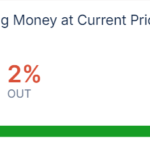
Vitalik Buterin, the co-founder of the Ethereum network, has identified several key targets essential for the future evolution of the blockchain. These aims are designed to enhance The Surge, the second phase of Ethereum’s developmental blueprint, which focuses on scaling the network through rollups.
In a recent blog post, Buterin proposed solutions to tackle the blockchain trilemma, advance data availability sampling, refine layer-2 (L2) proof systems, scale the Ethereum layer-1 (L1) network’s execution, and improve interoperability among L2 chains.
The Rollup-Centric Roadmap
The Surge roadmap has seen some accomplishments, including increasing the data bandwidth of Ethereum L1 through the introduction of blobs, the expansion of Ethereum Virtual Machine (EVM)-compatible rollups, and the execution of sharding on L2 networks.
Nonetheless, these advancements have presented specific challenges, and Buterin asserts that Ethereum developers must address these issues to complete the rollup-centric roadmap while maintaining the network’s strength and decentralization.
It should be noted that the primary objectives of The Surge include achieving at least 100,000 transactions per second on Ethereum and its L2s, ensuring the decentralization and integrity of the Ethereum L1, maximizing interoperability between L2s, and enabling certain L2s to inherit Ethereum’s fundamental properties such as trustlessness, openness, and resistance to censorship.
Buterin’s Goals For The Surge
The Ethereum co-founder has suggested employing a combination of data availability sampling and SNARKs to address the blockchain trilemma. This pertains to the difficulty of achieving the three essential attributes of blockchain technology: security, scalability, and decentralization. The idea posits that it is challenging to fulfill all three at once, as enhancing one often undermines the others.
Buterin contends that the trilemma can be resolved through data availability sampling, which can be facilitated by compressing data on the Ethereum network. As each transaction in a rollup consumes substantial on-chain data, compression can be achieved through methods such as signature aggregation, substituting addresses with pointers, and crafting bespoke serialization for transaction values.
Additionally, the Ethereum developer emphasized the necessity for L2-proof systems to become reliable. These systems must evolve to a level of trustlessness and ensure that only legitimate transactions are accepted.
Moreover, Buterin pointed out the challenge of ensuring that users can seamlessly navigate the L2 ecosystem. He proposed that making the L2 ecosystem operate like a unified Ethereum network can be accomplished through the introduction of chain-specific addresses and payment requests, along with a standardized open protocol for cross-chain operations.
At the same time, the computer programmer highlighted the need for scaling Ethereum L1 alongside L2 advancements, as focusing solely on developing layer-2 chains could jeopardize the entire ecosystem in the long run.
Binance Free $600 (CryptoPotato Exclusive): Use this link to register a new account and receive $600 exclusive welcome offer on Binance (full details).
LIMITED OFFER 2024 at BYDFi Exchange: Up to $2,888 welcome reward, use this link to register and open a 100 USDT-M position for free!








